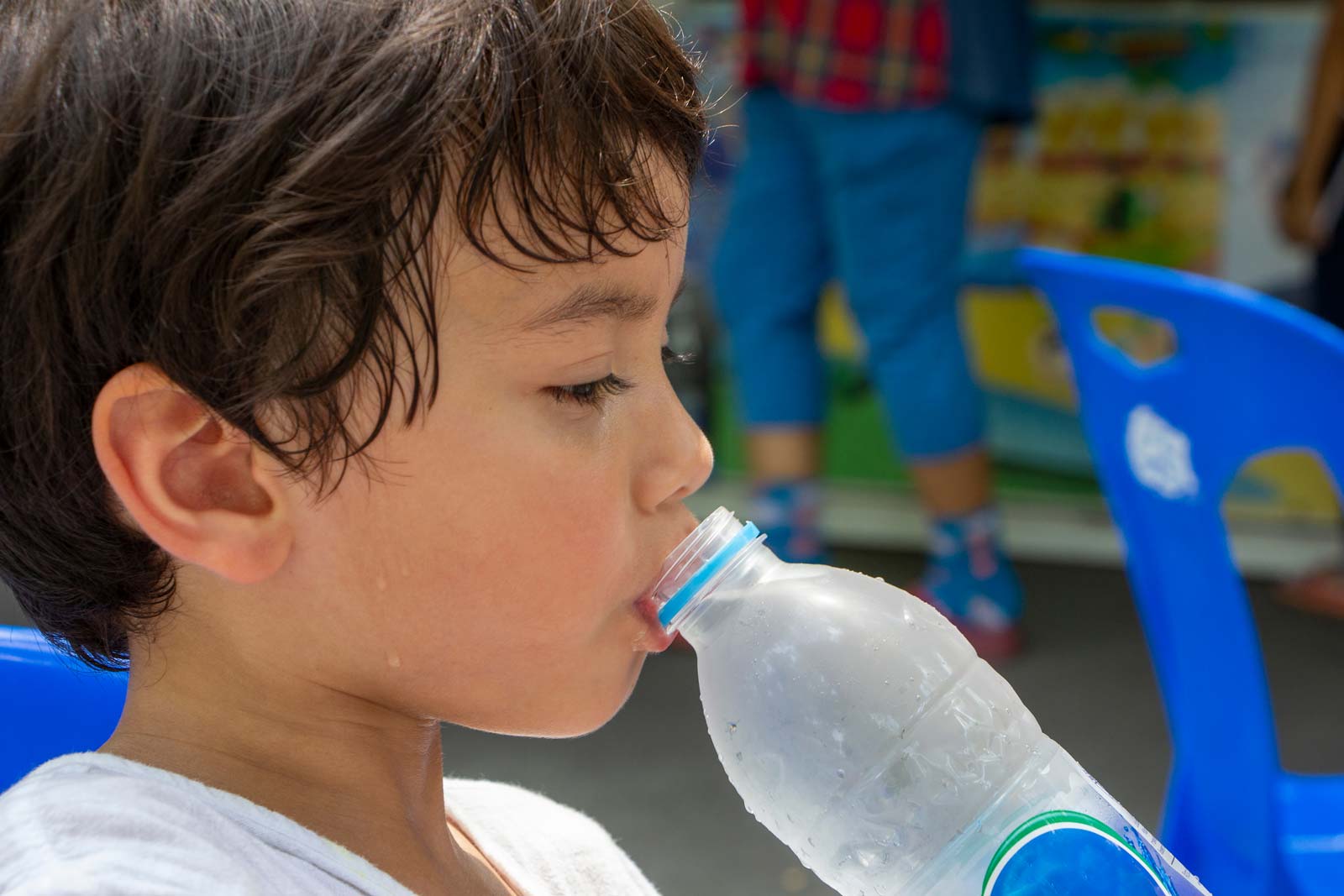
Living in Baytown, Texas, we are no strangers to scorching summer temperatures. While staying hydrated is important year-round, it is vital for parents to be aware of the signs of dehydration in their infants, toddlers, and children. By recognizing the symptoms early and taking appropriate action, such as providing fluids and seeking medical attention, if necessary, we can protect our children from the risks associated with dehydration.
Understanding Dehydration in Children
Dehydration occurs when the body loses more fluids than it takes in, disrupting the balance of essential electrolytes and negatively impacting bodily functions.
Infants, toddlers, and children typically have a higher body surface area-to-weight ratio, so they are at a greater risk of fluid loss through sweating, making them more susceptible to dehydration than adults.
Signs of Dehydration in Infants, Toddlers, and Kids
- Dry Mouth and Lips: Keep an eye out for dryness in your child’s mouth and lips. Cracked lips and a parched tongue can be early signs of dehydration.
- Reduced Urination: Pay attention to your child’s urine output. Decreased frequency or darker-colored urine may indicate dehydration.
- Sunken Fontanelle: For infants, a sunken soft spot on the top of the head (fontanelle) may be a sign of dehydration.
- Lethargy and Irritability: Dehydration can cause fatigue, listlessness, and a general lack of energy. If your child appears unusually tired or irritable, it may be a warning sign of dehydration.
- Dry Skin and Poor Elasticity: Check your child’s skin for dryness, and gently pinch and release the skin on their arm or abdomen. If the skin takes longer to return to its normal position, it may indicate dehydration.
- Thirst and Decreased Tear Production: Increased thirst and dry eyes can be indicators of dehydration in children.
What to Do if You Suspect Your Child is Dehydrated
If you notice any of the above signs of dehydration in your child, it is essential to act promptly. Here are the steps you should take:
- Offer Fluids: Start by offering fluids to your child immediately. Small, frequent sips of water, electrolyte solutions, or oral rehydration solutions (ORS) can help replenish lost fluids and electrolytes.
- Seek Shade and a Cool Environment: Move your child to a shaded and cool area to prevent further fluid loss and help them cool down.
- Monitor Symptoms: Continuously assess your child’s condition and watch for improvement or worsening of symptoms. If their symptoms persist or worsen, seek medical attention.
- Consult a Healthcare Professional: If you have any concerns about your child’s hydration status, it is important to consult a healthcare professional. They can provide a comprehensive evaluation and appropriate treatment.
Preventing Dehydration: The Best Fluids for Infants, Toddlers, and Children
Prevention is key when it comes to dehydration. To keep your child hydrated and healthy, offer the following fluids:
- Breast Milk or Formula: For infants under six months, breast milk or formula should be their primary source of hydration. Continue breastfeeding or formula feeding on demand.
- Water: For infants over six months, offer small amounts of water throughout the day, especially in hot weather or during physical activity.
- Electrolyte Solutions or Oral Rehydration Solutions: These solutions, available over the counter, can help replenish fluids and electrolytes lost during illness or intense physical activity.
- Fresh Fruits and Vegetables: Incorporate hydrating fruits and vegetables into your child’s diet, such as watermelon, cucumber, oranges, and strawberries. These foods provide additional hydration and essential nutrients.
- Avoid Sugary and Caffeinated Beverages: Limit sugary drinks and avoid caffeinated beverages, as they can contribute to dehydration.
How Much Water Should Children Drink to Stay Hydrated?
While individual hydration needs vary based on factors such as age, weight, and activity level, a general guideline is to encourage children to drink an adequate amount of water throughout the day.
The American Academy of Pediatrics (AAP) suggests that children aged 1 to 3 years should aim for about 4 cups (32 ounces) of fluids per day, including water and other beverages. For children aged 4 to 8 years, the recommended intake increases to approximately 5 cups (40 ounces) per day.
However, during hot weather or vigorous physical activity, additional fluids may be necessary to compensate for increased sweating and fluid loss.
Encourage your child to drink small amounts of water frequently, and remind them to hydrate before, during, and after physical activity. You may even want to consider buying them their own dedicated reusable water bottle so that they can get in the habit of drinking and refilling it throughout the day.
By promoting a consistent intake of fluids and being mindful of increased needs during hot summer days, parents can help their children stay properly hydrated and prevent dehydration.
Remember, prevention is the best strategy, so ensure your child stays hydrated by offering appropriate fluids and keeping them cool in hot weather. With your care and attention, your children can enjoy a safe and healthy summer season.
Emergency Care in Baytown
The Patients ER’s team is here to provide emergency medical services to Baytown families. For non-emergency inquiries, we can be contacted at 281-576-0555 or online. For emergencies, please dial 911 or visit us at 10133 Interstate 10 East, Baytown, TX 77521.

 Caffeine, Soda, and Coffee: Is it safe for kids?
Caffeine, Soda, and Coffee: Is it safe for kids?